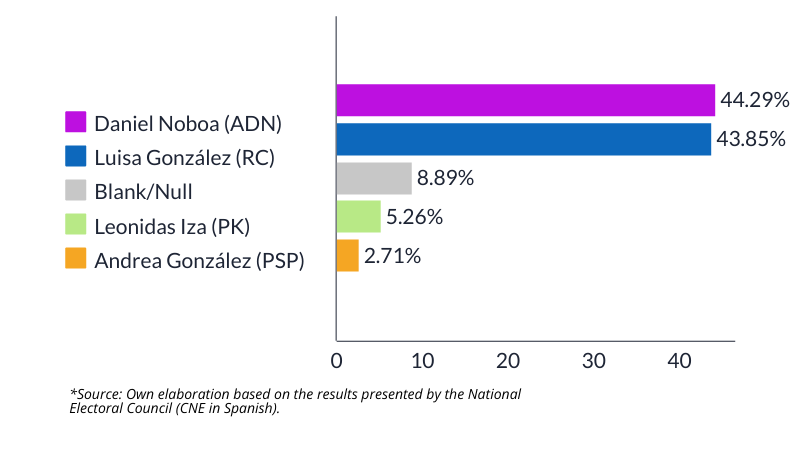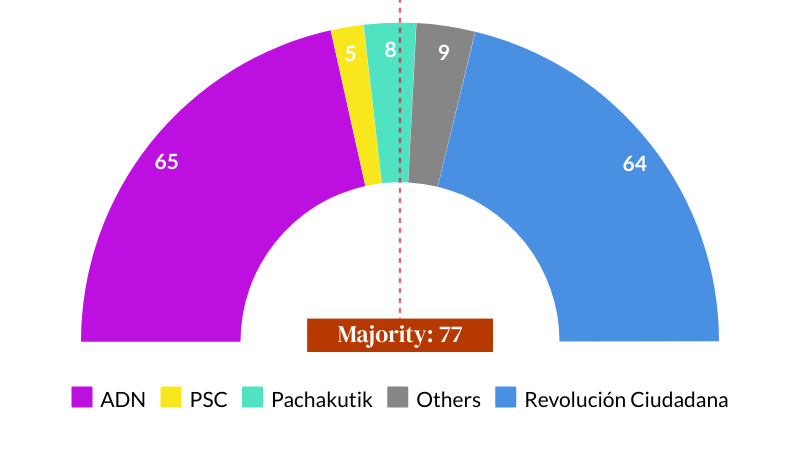Noboa and González to face off in a polarized runoff election to decide the presidency

On Sunday, February 9, Ecuador held general elections to elect the president, vice-president and 151 members of the National Assembly for the 2025-2029 period. With a slim difference between the main candidates, a presidential run-off election was confirmed for April 13, in which the current president, Daniel Noboa, and Luisa Gonzalez, representative of Revolución Ciudadana, will face each other.
Although the final results of the new National Assembly are not yet defined, the preliminary scenario anticipates a Legislative branch marked by polarization between the two main political forces. The current ruling party Acción Democrática Nacional (ADN in Spanish) is emerging as the first minority, closely followed by Revolución Ciudadana. Both parties will have to articulate strategic alliances with minority forces to promote their agendas and guarantee governability.
Presidential election results

The narrow margin between Noboa and Gonzalez evidences the deep polarization of the Ecuadorian electorate, reflecting the confrontation between two opposing political models. In this context, the 8% of null and blank votes will be a key factor in the definition of the next president, since many voters could be more inclined to make a decision based on the rejection of a candidate than to programmatic affinity. Likewise, the 5.26% obtained by Leonidas Iza, candidate of Pachakutik, acquires a strategic value, since his positioning could have an impact on the reconfiguration of electoral support for the runoff.
Legislative Elections
Although the final results of the National Assembly have not yet been made official, current projections anticipate a polarized Legislative Branch between two ideologically opposed blocks: the ruling party ADN and the correista RC. Although ADN could consolidate itself as the first minority, it would not reach the absolute majority (77 seats). Meanwhile, RC, which has led the opposition in the last three legislative periods, would be positioned as the second force in the new parliamentary composition that will take office on May 14.

This scenario configures a polarized Legislative, where both the ruling party and the opposition will have to strengthen the cohesion of their benches and articulate strategic alliances with minority forces to make their agendas viable and guarantee governability.
Projections
The narrow voting margin suggests that the electorate’s decision in the run-off election will be determined by the perception of stability, the capacity of each candidate to articulate strategic alliances and the construction of a convincing narrative on governance and the future of the country.
Both Noboa and Gonzalez will have to adjust their strategies to consolidate the support obtained in the first round and capture the vote of the undecided and other political forces. This runoff will not only measure the level of polarization, but will also highlight the need to build agreements, both to ensure electoral victory and to guarantee long-term governability.
The new composition of the National Assembly reflects a marked division between the two main political forces. In this scenario, both ADN and Revolución Ciudadana will have to forge consensus with the minority parties to promote their agendas and avoid legislative paralysis. Negotiation and majority building will be key factors to preserve institutional stability.
